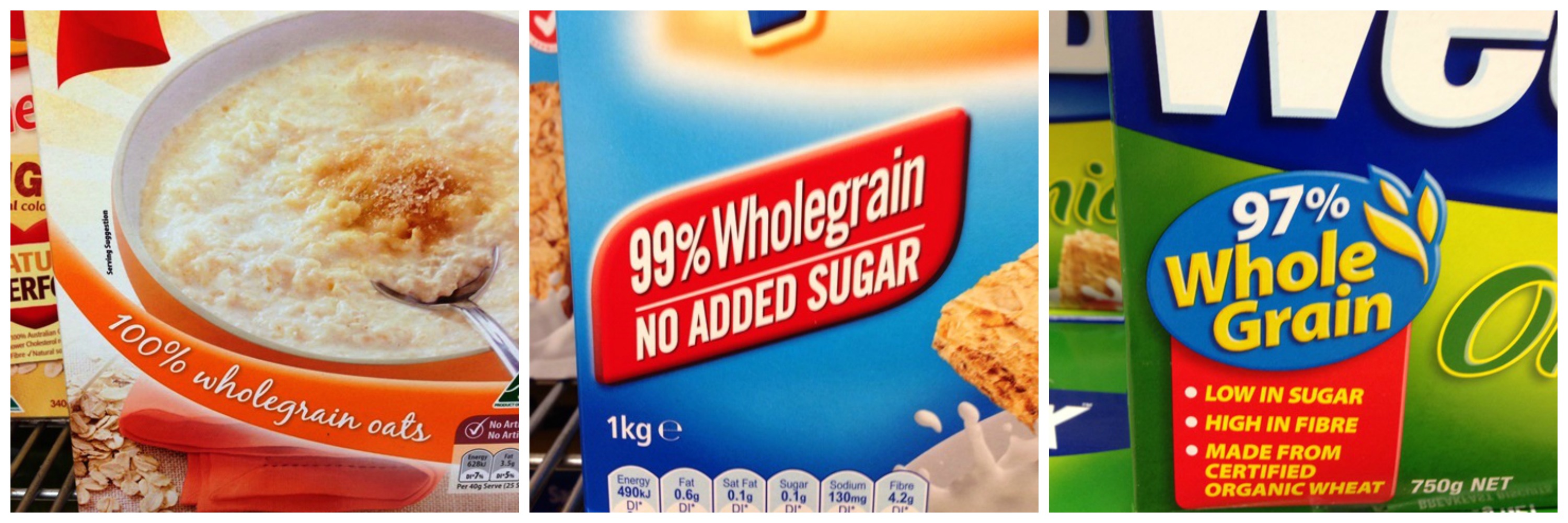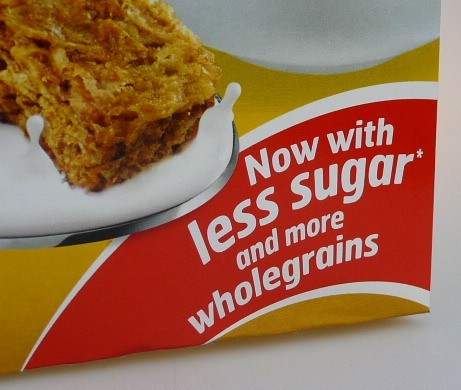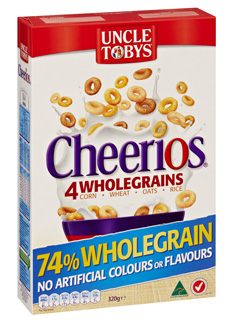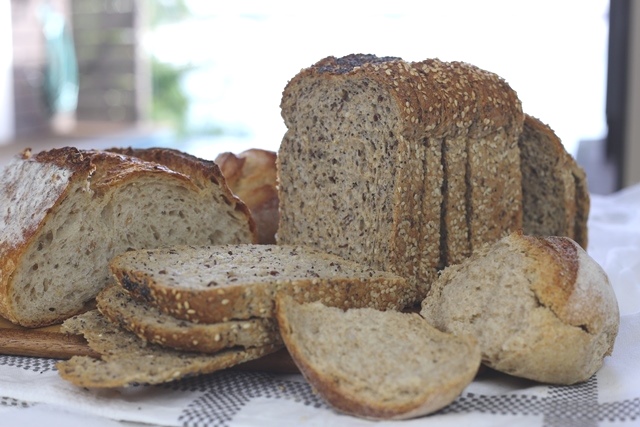- Home
- Blog
- Carbs, Sugars and Fibres
- Easy ways to get whole grains into your meals
Easy ways to get whole grains into your meals
Written by Catherine Saxelby
on Friday, 18 April 2014.
Tagged: bread, breakfast, breakfast cereals, carbs, convenience, fibre, healthy cooking, healthy eating, snacks, tips, wellness, whole grains

Whole grains shouldn’t be hard work. The two key foods to swap to whole grain are bread and breakfast cereal. These two will give you the biggest bang for your grainy buck so I’ll concentrate of those two here.
1. Bread
Personally I love chewy, dense, grainy breads.
My parents were Polish so dark, heavy pumpernickel or rye bread or steamed buckwheat (kasha) were not unusual at our place. Not fun in your school lunch - but delish under ham and dill-pickled cucumber or some sauerkraut.
Look for the words ‘wholemeal’ or ‘whole grain’ on the label.
Remember that wholemeal, even if smooth, is the same thing as whole grain as it contains all parts of the grain.
You don’t have to see those whole bits of grains.
2. Breakfast cereals
These are tricky. There are the obvious whole grain types such as Weet Bix or Vita Brits with 97 to 99 per cent whole grain.

Not forgetting that traditional staple rolled oats at 100 per cent which is the basis of my fave breakfast muesli. These cereals are basic, simple, affordable, with no or low added sugar. Always top of the list.

Check the ingredient list. Choose products with whole grain ingredients at the beginning of the list e.g. look for words like ‘whole wheat’, ‘whole grain’, ‘mixed grain’, ‘cracked’, ‘flaked’ or ‘kibbled’.
Or a total percentage of whole grains e.g. Ingredients: Whole grains 73%
Thanks to the Grains & Legumes Nutrition Council (GLNC) for these tips.
What about those ‘reformulated’ cereals?

This can get up the noses of nutritionists. Why? Because these reformulated cereals look and taste just like the not-so-healthy, over-processed originals. On the one hand, this is good as your kids will be eating better without realising that their favourite cereal has been improved. On the other, it could look like a ploy to entice parents to buy the product then hook your kids into loving it so much that pester power takes over.
There's no official minimum percentage set by the government or any law of the land. Usually the manufacturer tells you the amount of whole grains that are in the product (as a percentage of whole grains present) and how much this contributes towards the 48 g daily target intake.For example:
Cheerios
Claim: “With 4 Wholegrains Corn Wheat Oats Rice”
 Has 74% whole grains mainly wheat and corn – see the Ingredient List below:
Has 74% whole grains mainly wheat and corn – see the Ingredient List below:
Wholegrains (74%) [Wheat (36%), Corn (28%), Oats (5%), Rice (5%)], wheat starch, sugar, golden syrup, sunflower oil, salt, colours (caramel and annatto), acidity regulator (trisodium phosphate), vitamins and minerals.
Milo cereal
Claim: “Wholegrain Fibre Nutritious Energy”
 Has 53% whole grains made up of wheat and corn – see Ingredient List below:
Has 53% whole grains made up of wheat and corn – see Ingredient List below:
Whole Grain cereals (53%) [whole grain wheat (36.4%), whole grain corn (16.6%)], sugar, wheat flour, formulated supplementary food: Milo (16%) *, fat-reduced cocoa power, barley malt extract, skimmed milk powder, sunflower oil, minerals (calcium, iron and zinc), flavouring: chocolate flavour and vanillin, salt, vitamins.
* {Extract of malted barley and rice and/or barley, milk solids, sugar, fat-reduced cocoa powder, minerals, vitamins}
My tip: compare brands and buy the one that’s got the highest percentage of whole grains. Ideally anything over 70 per cent gets my tick, but the usual practical level is just over 50 per cent. Even 25 per cent is better than none.
3. More difficult swaps to make
If you want go all out for a ‘whole grain makeover’ then you can include wholemeal pastas, rice and some of the ancient grains into your diet.
Wholemeal pasta is hard going and unpopular (although there are newer half-whole grain products that taste much better) but it’s OK to have ordinary white pasta as long as you cook it al dente so it’s low GI.
Brown rice is a pleasant whole grain if you have time to cook it at home but everywhere you eat out e.g. Chinese, sushi, Thai or Vietnamese, you’ll be offered white rice so rice is hard to swap all the time.
Ancient grains such as pearled barley, wild rice, black rice, buckwheat, whole rye grains, bulgur cracked wheat, spelt wholemeal flour, wholegrain emmer, freekah and whole kamut berries add variety to your slow cooking.
The bottom line
Stick to bread and breakfast cereal for your whole grains.
Foodwatch
The Good Stuff
The Boring Stuff
© 2025 Foodwatch Australia. All rights reserved
Website by Joomstore eCommerce






